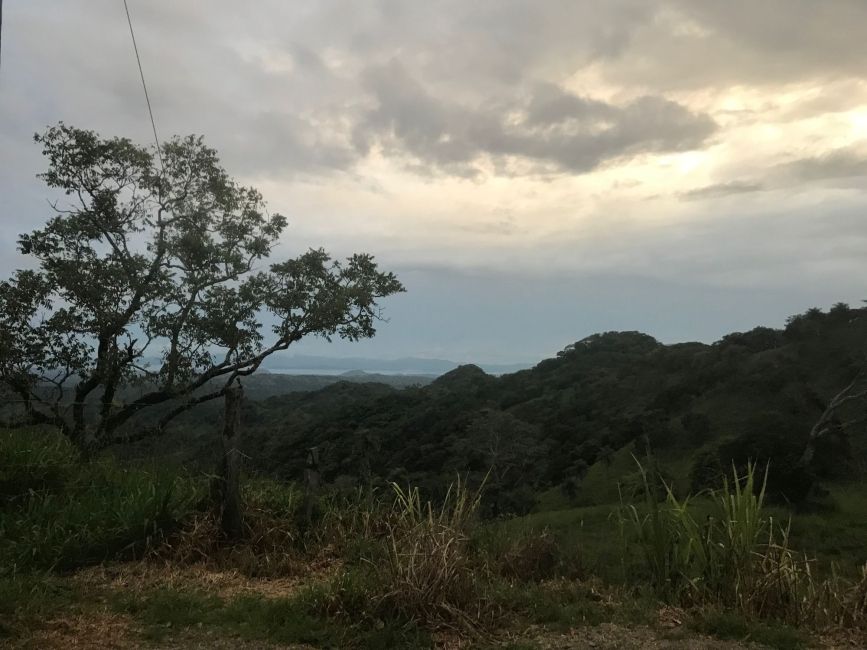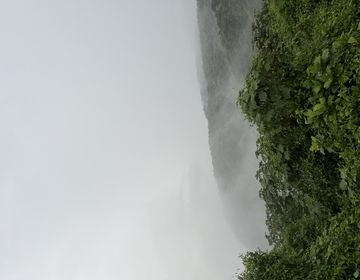The Long and Winding Road to Monteverde …
Depending upon where you’re departing from, the trip to San Jose, Costa Rica is easy. Especially from the U.S. After just a 3- to 4-hour flight, the land of Central America is all yours to explore.
The trip from San Jose to Monteverde though, is mighty and long. It begins with the smiling faces of CIEE staff who’ve arrived to transport us from the San Jose International Airport to CIEE’s new Global Institute in Monteverde, just 80 miles from the airport.
In the U.S. you’re prone to think, eighty miles – about eighty minutes. Well, it’s time to change your thinking cap. Costa Rica is a developing nation (but quickly on its way to becoming developed). While its roads are paved and well-marked, they are not eight-lane freeways with a 120 km speed-limit. At most, they are two lanes, and depending up the time of day, choked with traffic. And because the roads have been carved through mountainous terrain, its common to find yourself behind an eighteen-wheeler filled with cargo, crawling its way up the hills.
At this point you have two choices. Look at your phone and rue the inconvenience. Or take a deep breath and dive into the delicious landscape unrolling before you. The “rich coast” of this Central American country is bordered by the North Pacific Ocean on one side, and the Caribbean Sea on the other. In between these two bodies of water is a spectacular swath of rich green, mountainous terrain, dipping in and out of sun-stroked valleys and forest-filled hillsides. On this August day, it was a balmy 72 degrees and fat spongy clouds seemed to be wiping the tips off distant mountain tops.
Our gracious driver Alba stopped to buy a three-kilo bag of lychee fruit from a roadside stand. While hideous looking on the outside - with thick strands of hair jutting from a prickly skin – lychee fruit harbors a sweet scoop of delicious, melon-like flesh on the inside. I had an inkling; this would be the first of many wonderful surprises in store during our time in Monteverde.
Three-and-a-half hours later, after many bumpy miles along a dirt road, we arrived at the CIEE Global Institute, which sits on a 150-acre farm in the Cordillera de Tilarán mountain range. The area is one of Costa Rica’s most popular destinations for ecotourism because of its stunning biodiversity and world-renown sustainability initiatives. In fact, the staff at the CIEE Global Institute plan to ensure the entire campus is carbon neutral by the end of 2020.
A 360-degree look around is all it takes to understand why students make Costa Rica their classroom for studies in Sustainability and the Environment; Tropical Ecology and Conservation; STEM; and Sustainable Development for the Tropics.
And what a classroom it is!
Related Posts
EAT, DRINK, EXPLORE: MONTEVERDE
BEST FOOD TO EAT IN MONTEVERDE There is absolutely no way to avoid eating casado in Costa Rica. This traditional comida tipica (typical dish) is on every restaurant and home... keep reading
What is Study Abroad? Everything You Need to Know!
@cieestudyabroad Study Abroad 101 #cieestudyabroad #studyabroad #internationalstudent #collegemajors #collegelife #students #scholarships #studyabroadprograms #internships hollywood - rchie Every student hears about it, but what does study abroad mean , anyway? How... keep reading
My Experience Hiking the Monteverde Cloud Forest Reserve
By: Lesleigh Taylor If you ever find yourself in the heart of Monteverde, a visit to the Monteverde Cloud Forest Reserve should be at the top of your list. Nestled... keep reading




